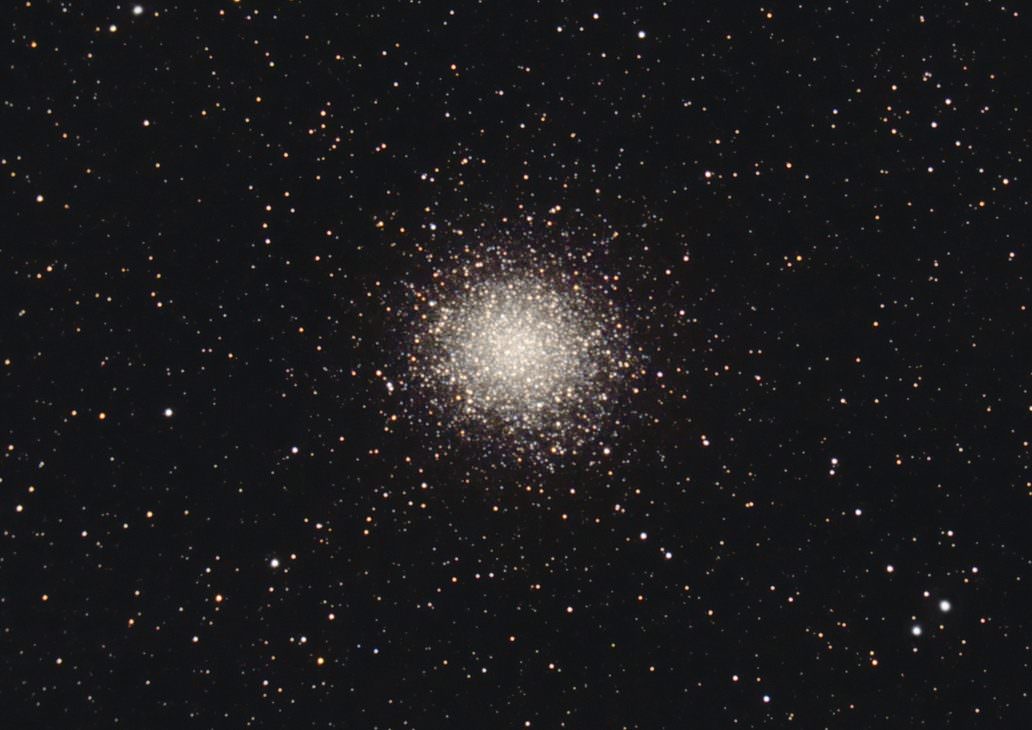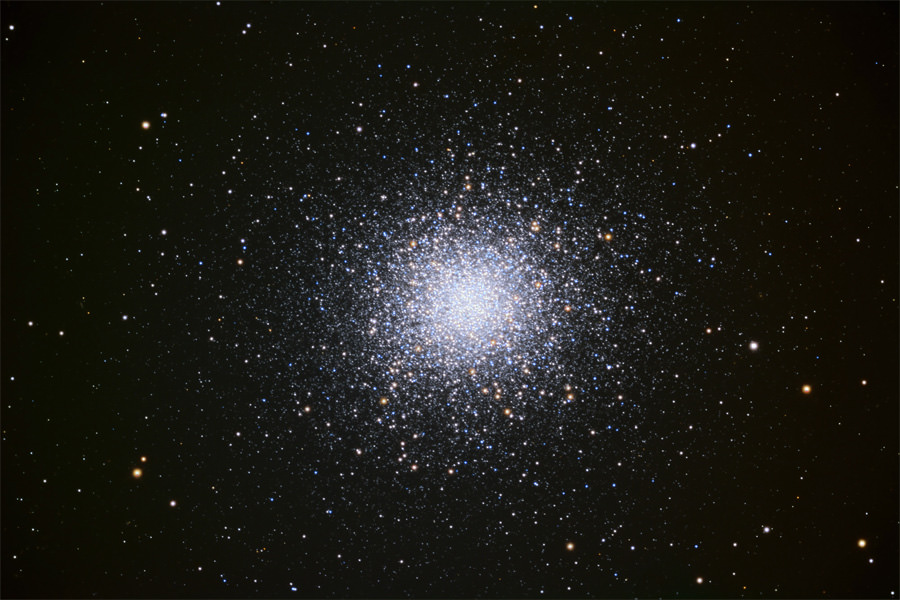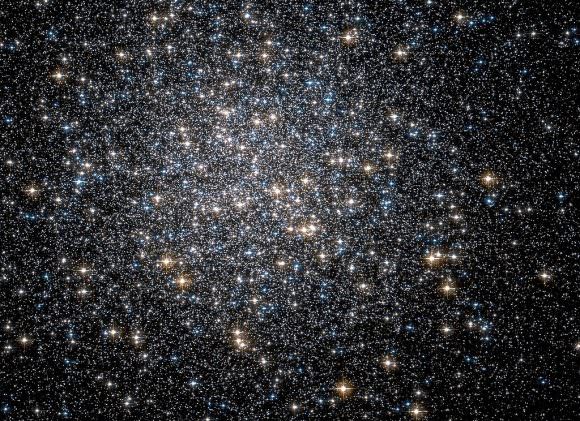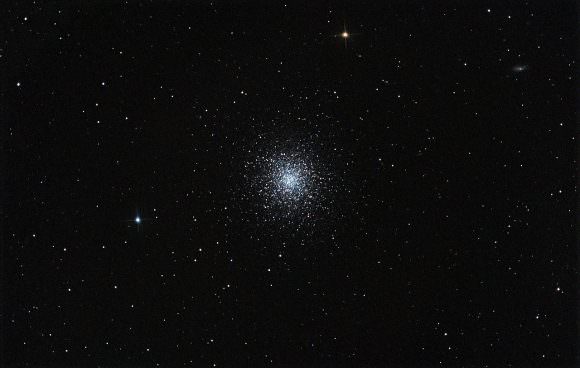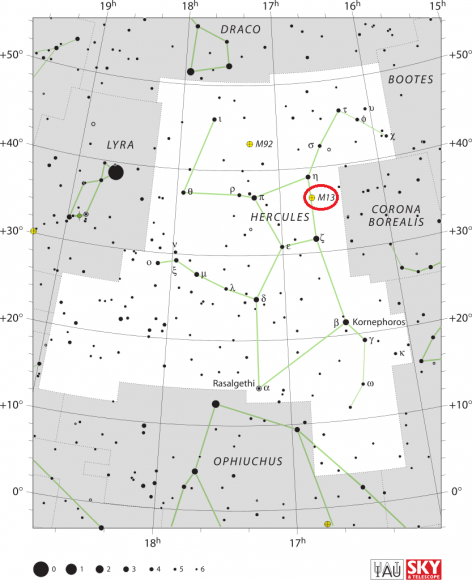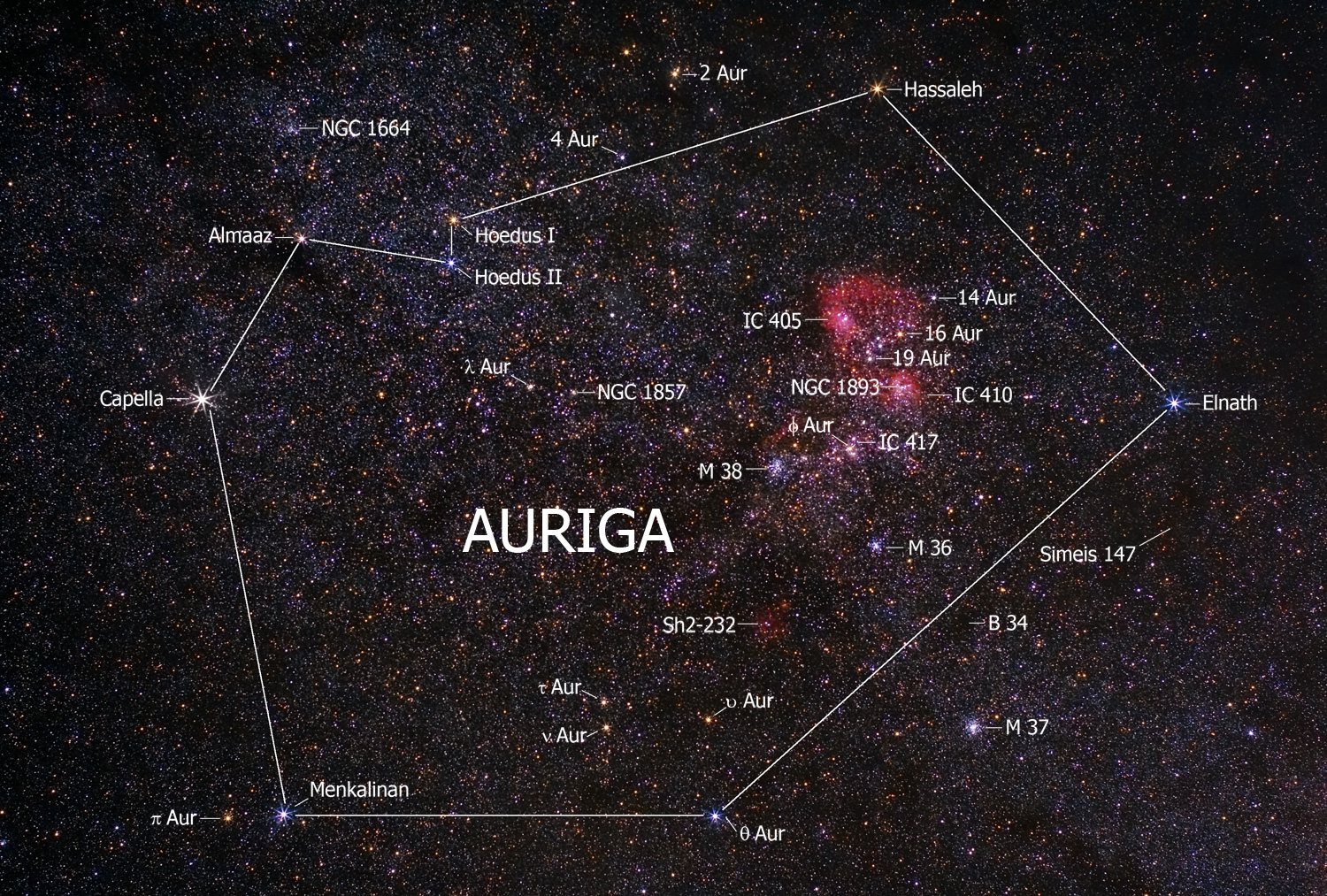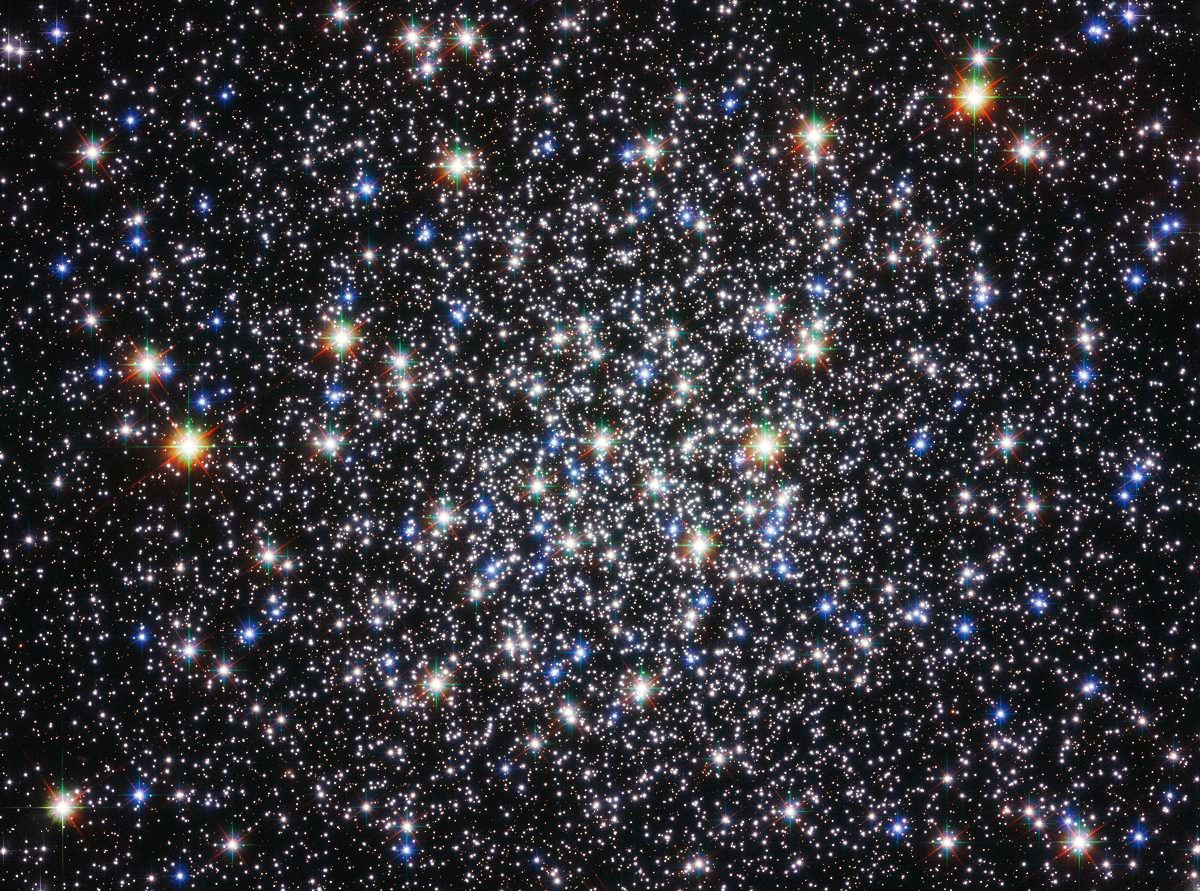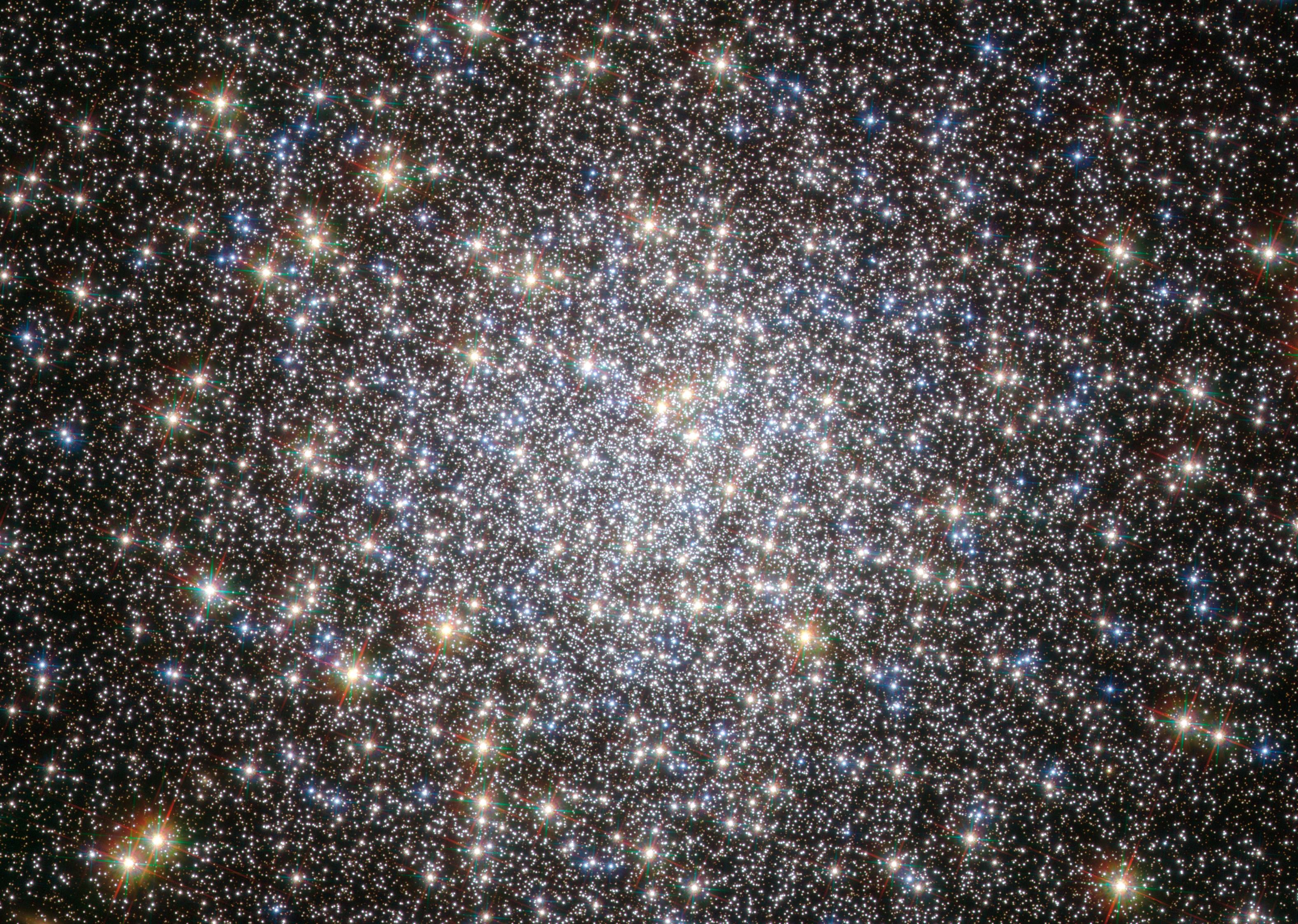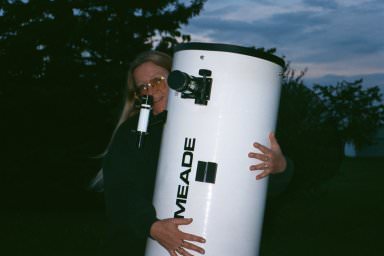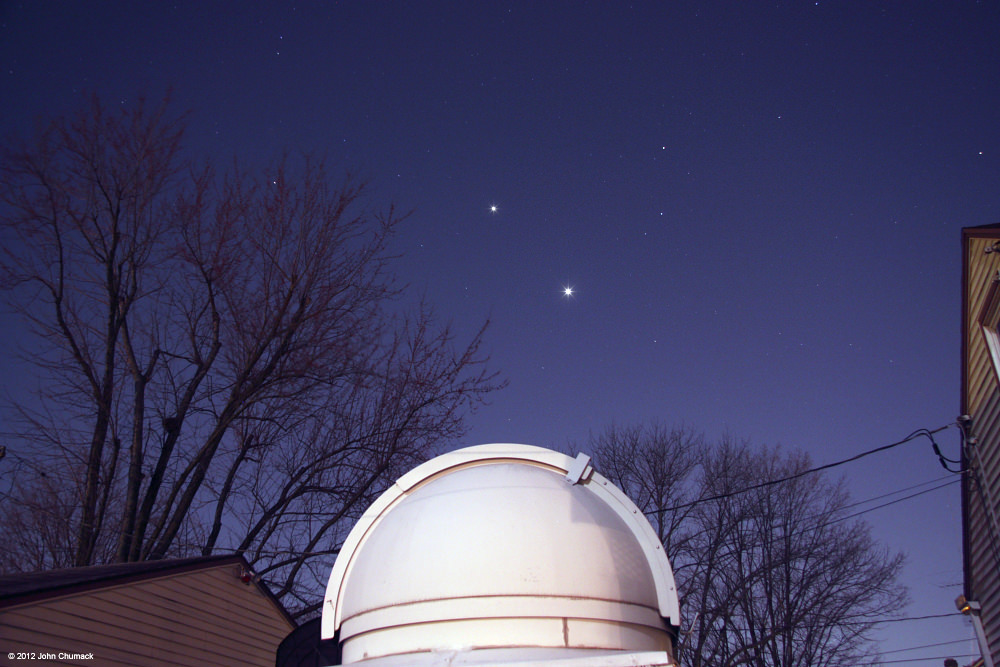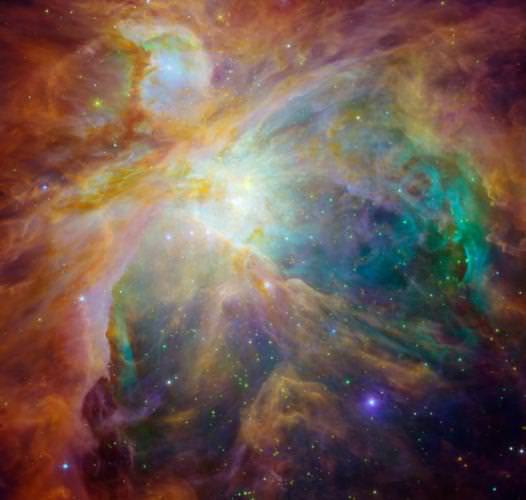Welcome back to Messier Monday! Today, in our ongoing tribute to Tammy Plotner, we take a look at the M14 globular cluster!
In the 18th century, French astronomer Charles Messier began cataloging all the “nebulous objects” he had come to find while searching the night sky. Having originally mistook these for comets, he compiled a list these objects in the hopes of preventing future astronomers from making the same mistake. In time, the list would include 100 objects, and would come to be known as the Messier Catalog to posterity.
One of these objects was the globular cluster which he would designate as M14. Located in the southern constellation Ophiuchus, this slightly elliptically-shaped stellar swarm contains several hundred thousand stars, a surprising number of which are variables. Despite these stars not being densely concentrated in the central region, this object is not hard to spot for amateur astronomers that are dedicated to their craft!
Description:
Located some 30,000 light years from Earth and measuring 100 light years in diameter, this globular cluster can be found in the southern Ophiuchus constellation, along with several other Messier Objects. Although it began its life some 13.5 billion years ago, it is far from being done changing. It is still shaking intracluster dust from its shoes.
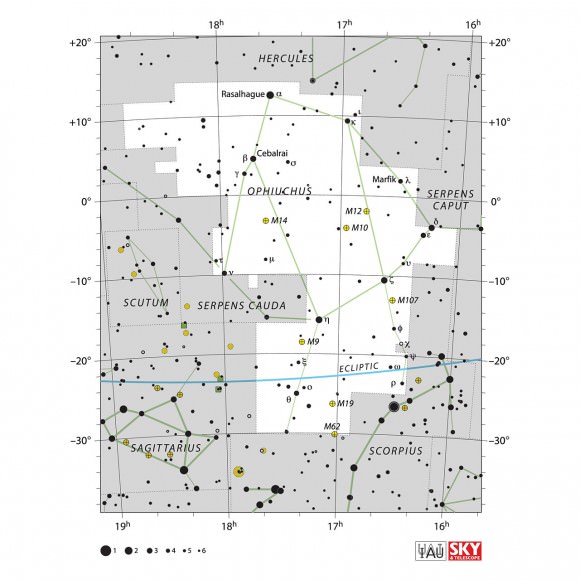
What this means is that M14, like many globular clusters, contains a good deal of matter that it picked up during its many times orbiting the center of our Galaxy. According to studies done by N. Matsunaga (et al):
“Our goal is to search for emission from the cold dust within clusters. We detect diffuse emissions toward NGC 6402 and 2808, but the IRAS 100-micron maps show the presence of strong background radiation. They are likely emitted from the galactic cirrus, while we cannot rule out the possible association of a bump of emission with the cluster in the case of NGC 6402. Such short lifetime indicates some mechanism(s) are at work to remove the intracluster dust… (and) its impact on the chemical evolution of globular clusters.”
Another thing that makes Messier 14 unusual is the presence of CH stars, such as the one that was discovered in 1997. CH stars are a very specific type of Population II carbon stars that can be identified by CH absorption bands in the spectra. Middle aged and metal poor, these underluminous suns are known to be binaries. Patrick Cote, the chief author of the research team that discovered the star, wrote in their research report to the American Astronomical Society:
“We report the discovery of a probable CH star in the core of the Galactic globular cluster M14 (=NGC 6402 = C1735-032), identified from an integrated-light spectrum of the cluster obtained with the MOS spectrograph on the Canada-France-Hawaii telescope. Both the star’s location near the tip of the red giant branch in the cluster color-magnitude diagram and its radial velocity therefore argue for membership in M14. Since the intermediate-resolution MOS spectrum shows not only enhanced CH absorption but also strong Swan bands of C2, M14 joins Centaurus as the only globular clusters known to contain “classical” CH stars. Although evidence for its duplicity must await additional radial velocity measurements, the CH star in M14 is probably, like all field CH stars, a spectroscopic binary with a degenerate (white dwarf) secondary.”
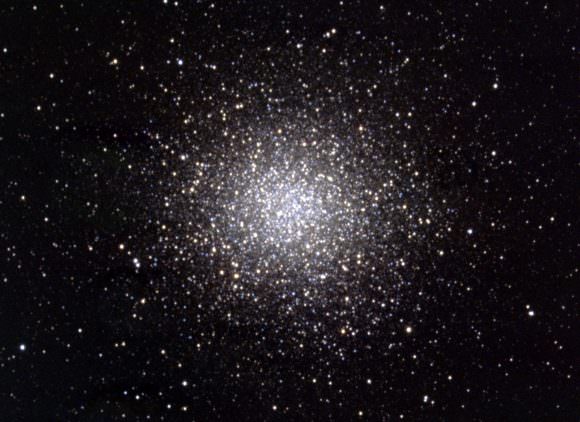
History of Observation:
The first recorded observations of the cluster were made by Charles Messier, who described it as a nebula without stars and catalogued it on June 1st, 1764. As he noted in his catalog:
“In the same night of June 1 to 2, 1764, I have discovered a new nebula in the garb which dresses the right arm of Ophiuchus; on the charts of Flamsteed it is situated on the parallel of the star Zeta Serpentis: that nebula is not considerable, its light is faint, yet it is seen well with an ordinary [non-achromatic] refractor of 3 feet & a half [FL]; it is round, & its diameter can be 2 minutes of arc; above it & very close to it is a small star of the nineth magnitude. I have employed for seeing this nebula nothing but the ordinary refractor of 3 feet & a half with which I have not noticed any star; maybe with a larger instrumentone could perceive one. I have determined the position of that nebula by its passage of the Meridian, comparing it with Gamma Ophiuchi, it has resulted for its right ascension 261d 18? 29?, & for its declination 3d 5? 45? south. I have marked that nebula on the chart of the apparent path of the Comet which I have observed last year [the comet of 1769].”
In 1783, William Herschel observed the cluster and was the first to resolve it into individual stars. As he noted, “With a power of 200, I see it consists of stars. They are better visible with 300. With 600, they are too obscure to be distinguished, though the appearance of stars is still preserved. This seems to be one of the most difficult objects to be resolved. With me, there is not a doubt remaining; but another person, in order to form a judgement, ought previously to go through all the several gradations of nebulae which I have resolved into stars.“
As always, it was Admiral William Henry Smyth who provided the most lengthy and detailed description, which he did in July of 1835:
“A large globular cluster of compressed minute stars, on the Serpent-bearer’s left arm. This fine object is of a lucid white colour, and very nebulous in aspect; which may be partly owing to its being situated in a splendid field of stars, the lustre of which interferes with it. By diminishing the field under high powers, some of the brightest of these attendants are excluded, but the cluster loses its definition. It was discovered by Messier in 1764, and thus described: “A small nebula, no star; light faint; form round; and may be seen with a telescope 3 1/2 feet long.” The mean apparent place is obtained by differentiation from Gamma Ophiuchi, from which it is south-by-west about 6deg 1/2, being nearly midway between Beta Scorpii and the tail of Aquila, and 16deg due south of Rasalhague [Alpha Ophiuchi]. Sir William Herschel resolved this object in 1783, with his 20-foot reflector, and he thus entered it: “Extremely bright, round, easily resolvable; with [magnification] 300 I can see the stars. The heavens are pretty rich in stars of a certain size [magnitude, brightness], but they are larger [brighter] than those in the cluster, and easily to be distinguished from them. This cluster is considerably behind the scattered stars, as some of them are projected upon it.” He afterwards added: “From the observations with the 20-foot telescope, which in 1791 and 1799 had the power of discering stars 75-80 times as far as the eye, the profundity of this cluster must be of the 900th order.” “It resembles the 10th Connoissance des temps [Messier 10], which probably would put on the same appearance as this, were it removed half its distance farther from us.”
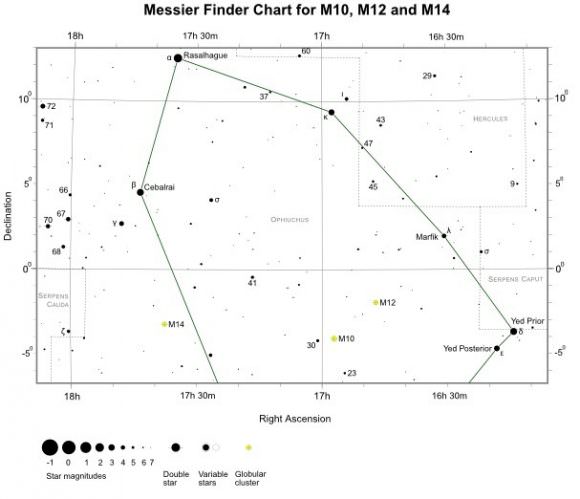
Locating Messier 14:
Messier 14 can be found by first locating Delta Ophiuchi, which M14 is located at about 21 degrees east and 0.4 degrees north from. It can also be found about one-third of the way from Beta to Eta Ophiuchi. If you know where Messier 10 is, take a look 0.8 degrees north and 10 degrees east of it to find M14. The cluster can also be located along the imaginary line from Cebalrai, an orange giant with an apparent magnitude of 2.76 and the fifth brightest star in Ophiuchus, to Antares, the bright red supergiant located in Scorpius.
With an apparent magnitude of +7.6, M14 can be easily observed with binoculars. For those using small telescopes, the bright center and faint halo can be viewed, whereas 8-inch instruments will reveal the cluster’s elliptical shape. To resolve individual stars, you will need a 12-inch telescope or larger. The best time of year to observe the cluster is in the months of May, June and July.
And here are the quick facts for Messier 15, for your convenience:
Object Name: Messier 14
Alternative Designations: M14, NGC 6402
Object Type: Globular Cluster
Constellation: Ophiuchus
Right Ascension: 17 : 37.6 (h:m)
Declination: -03 : 14 (deg: m)
Distance: 30.3 (kly)
Visual Brightness: 7.6 (mag)
Apparent Dimension: 11.0 (arc minutes)
We have written many interesting articles about Messier Objects here at Universe Today. Here’s Tammy Plotner’s Introduction to the Messier Objects, , M1 – The Crab Nebula, M8 – The Lagoon Nebula, and David Dickison’s articles on the 2013 and 2014 Messier Marathons.
Be to sure to check out our complete Messier Catalog. And for more information, check out the SEDS Messier Database.

